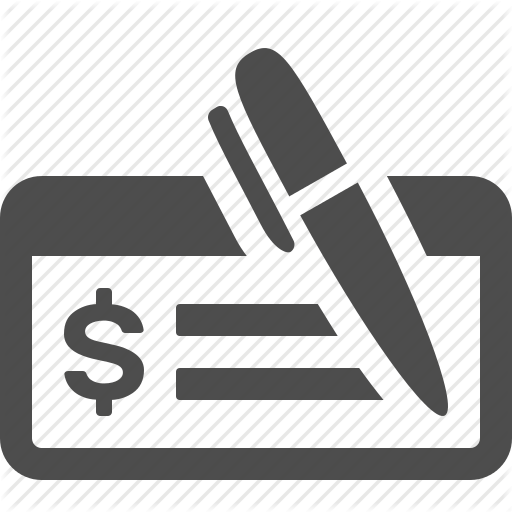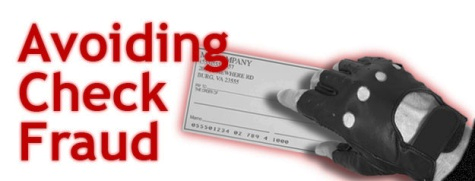The History of Checks


Since those humble beginnings, of the 66 billion check payments made in the U.S. in 1998:
36 billion checks were written by consumers
26 billion checks were written by businesses and about
4 billion were written by federal, state and local government agencies.
Furthermore, a recent Nielson Report projects that the number of check written annually will rise by two to four percent per year through the year 2020.
At the same time, more than 1.2 million worthless checks enter the payment system daily. According the National Check Fraud Center, check fraud and counterfeiting are among the fastest-growing problems affecting the nation’s financial system, producing estimated annual losses of $10 billion that continues to rise at an alarming rate annually.
Do I have your attention now?
With the proliferation of desktop publishing systems and high-end laser printers, color copiers and scanners, more criminals are trying their hand at document fraud.
Surprisingly, many businesses still totally ignore and neglect the need for document security–an expensive gamble. Since the revision of the Uniform Commercial Code in 1990, companies that don’t show ‘ordinary care’ by taking steps to prevent fraud can be held liable for fraudulent checks. ‘Ordinary care’ includes the use of security features such as VOID pantographs, microprinting, watermarks and control numbers, as well as proper storage and accounting of checks and other negotiable documents.
Two of the major types of check fraud:
Forgery (Making alterations) – Takes place when a stolen check is altered and modified without the approval of the check writer. Some of the methods used are Tape pull and scratch off, chemical washes, cut and paste, etc.
Counterfeiting (Creating duplicates) – Imitations or copies of genuine checks. Some of the methods used include scanning the original check, digitally manipulating names/amounts, laser printed high-quality duplicates, etc.
Make sure your company is not caught off guard. Devote the time and effort to review your present situation and, if changes are needed, implement them swiftly and without hesitation.
How can I prevent checks fraud?
The first step is to look for a certified security paper provider that offers you a full range of security features and who is willing to work with you if you want a custom design or need any particular security options you would like to incorporate on your checks.
Preventing fraud is easy and you can accomplish it by using the following approach:
A. Start with an Advanced Security Paper for a strong base. These are security features IN the paper.
Some of these advanced security features are:
A true papermachine watermark – Highest level paper security feature providing a high level of document authentication. Can be seen in ordinary light. Resists photocopying and scanning. Adds prestige and helps authentication.
Laid Lines – An anti-splice backer of printed diagonal lines to prevent cut & paste of information.
Chemical-Reactant Stains (Covert/hidden) – Chemical reactants stains serve as easily recognizable signs of attempted alteration. Readily shows tampering. Full reaction to bleach, polar/non-polar solvents, and acid/base attempts at document alteration. Criminals cannot create these features in copies or duplicates. Presence of stains or fugitive color verifies authenticity. Absence of stains or fugitive color signals a fake.
TonerFuse Coating (Covert/hidden) – Causes toner to fuse into paper making removal very difficult. Paper visibly delaminates when toner is removed with tape or by scrapping. Shows easily recognizable evidence of attempted alteration (delamination/abrasions) from scraping and tape pulls.
Visible fluorescent fibers – Randomly embedded green and red fluorescent fibers are invisible in normal light but glow under black light. Fibers cannot be photocopied or scanned.
Invisible fluorescent fibers – Only visible under ultraviolet light. Fibers fluoresce yellow when exposed to UV light. Criminals cannot create this feature in copies or duplicates. Presence of fibers verifies authenticity. Its absence signals a fake.
Printlock – Locks toner into the paper. Prevents character or number removal by scraping or tape pulling.
B. Layer on Printed Security Features for added protection. These are security features ON the paper.
Some popular examples of Printed Security Features are:
Warning bands – A notice or warning designed to advise document handles and potential fraud artists of specific overt and covert safeguards present.
Microprinting – Miniature print appears as a line or rule. Difficult to scan or copy. Can be verified with a magnifying glass. Helps authentication.
Ultraviolet/fluorescent ink – Special messages can be “hidden” so that they will only show under a black light
Rainbow Prismatic Pantograph – The pantograph check design is printed with graduated colors. These versions are the most difficult to photocopy and include our VOID copier security feature.
Signature Area & Amount Line protection – The signature area and amount line are printed with different pantograph backgrounds than the check. This use of multiple pantograph designs produces voids through different density settings on the copier. The signature area also has a warning clause indicating that the signature has a color background and that the border of the check contains micro printing.
With the use of an Advanced Security Check Paper you add value to your investment:
- Preventing/deterring forgery (checks alteration)
- Preventing/deterring counterfeiting (duplication)
- Providing authentication verification (fake detection)
At Printech we have been listening and working closely with our customers for more than 20 years.
Use this Blank Laser Check Guide to order checks for your company with optimal security features and to avoid fraud and comply with country’s regulations.
Contact us today and let us help you avoid being the next victim of check fraud.
Download Are Your Checks Safe article.






